Invasive Plants
We have put together a selection of invasive plants for you.
Click the link so we can ID you’re invasive species for you.
We have put together a selection of invasive plants for you.
Click the link so we can ID you’re invasive species for you.
Below is a small selection of the more common varieties found on the British Isles. For a more detailed list please click on this link to learn more
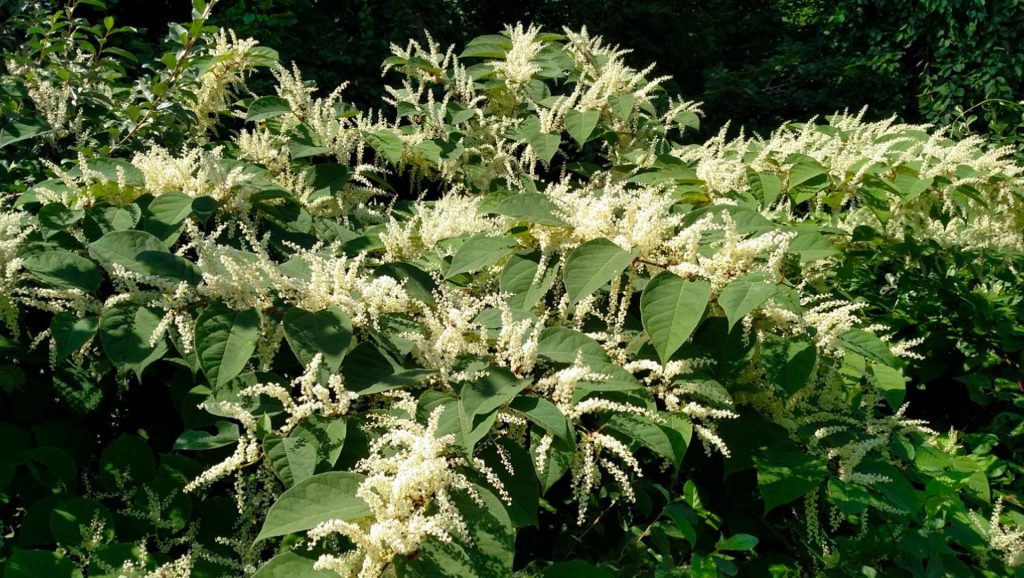
Is an herbaceous perennial plant that has hollow stems with distinct raised nodes that give it a similar appearance to Bamboo. The plant can reach 3m – 4m in a growing season and the rhizome or root system can grow down to depths or 2m – 3m and have a spread of 7m from the centre of the plant otherwise known as the crown. The leaves of Japanese Knotweed are a broad oval shape with a truncated base, typically 7 – cm in length and 5 – 12cm wide. The plant typically flowers in late summer early autumn and they are small cream or white erect racemes typically 6 – 15cm long. Japanese Knotweed can grow up to 10cm a day and is now regarded as the most invasive plant in the UK. The invasive root system and strong growth can cause great damage to concrete foundations, buildings, flood defences, roads, paving, retaining walls and architectural sites. It can also reduce the capacity of channels in flood defences to carry water. It can also stop you obtaining a mortgage from lenders in some circumstances. Due to the root system and the invasive nature of Japanese Knotweed it can take many years to eradicate the plant. The most common type of treatment is a herbicide treatment either by sprayer or stem injection. Other ways of eradication is to dig it out and remove it from site but with the amount of soil involved the cost rises dramatically. There are other options depending on the client’s requirements and the practicalities of the site. As Japanese Knotweed has no natural enemies experts have estimated that it costs the country a 166m annually.
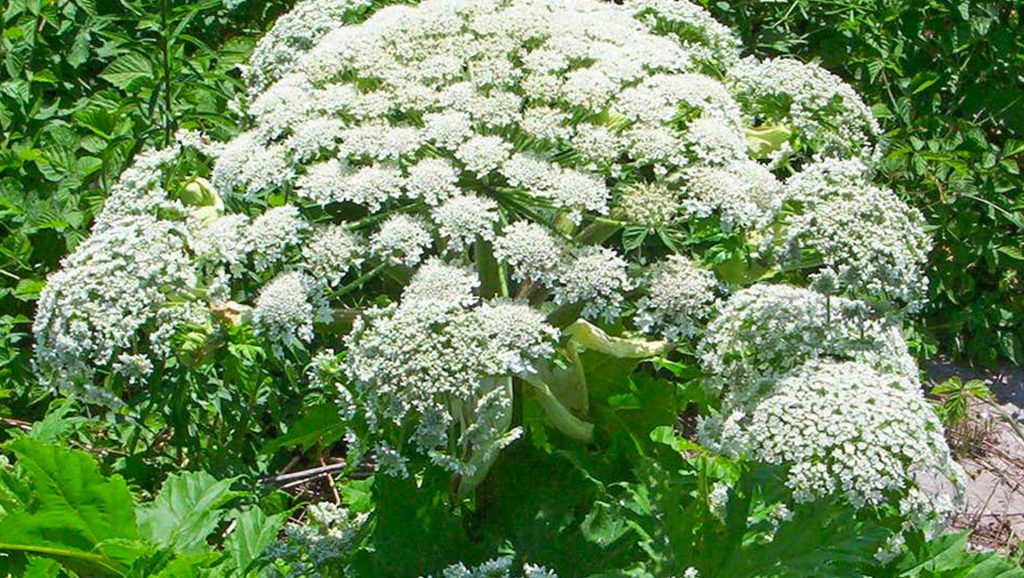
This species typically grows to heights of 2m – 5.5m (6ft 7in to 18ft 1in). It is phototoxic and considered to be a noxious weed. Giant Hogweed has a stout figure with bright green stems that have red spotted leaf stalks. The plant has deeply incised compound leaves. It has white flowered clusters in an umbrella shaped head. Giant hogweed was among many foreign plants introduced to Britain in the 19th century, mainly for ornamental reasons. It is now widespread throughout the British Isles, especially along riverbanks. By forming dense stands, they can displace native plants and reduce wildlife interests. Giant hogweed can cause severe skin irritation, when the skin is exposed to sunlight or to ultraviolet rays. Initially, the skin colours red and starts itching. Then blisters form as it burns within 48 hours. They form black or purplish scars that can last several years. Presence of minute amounts of sap in the eyes can lead to temporary or even permanent blindness. Giant Hogweed is a biannual, which means it grows one year and flowers the next, which means it, can take many years to eradicate.
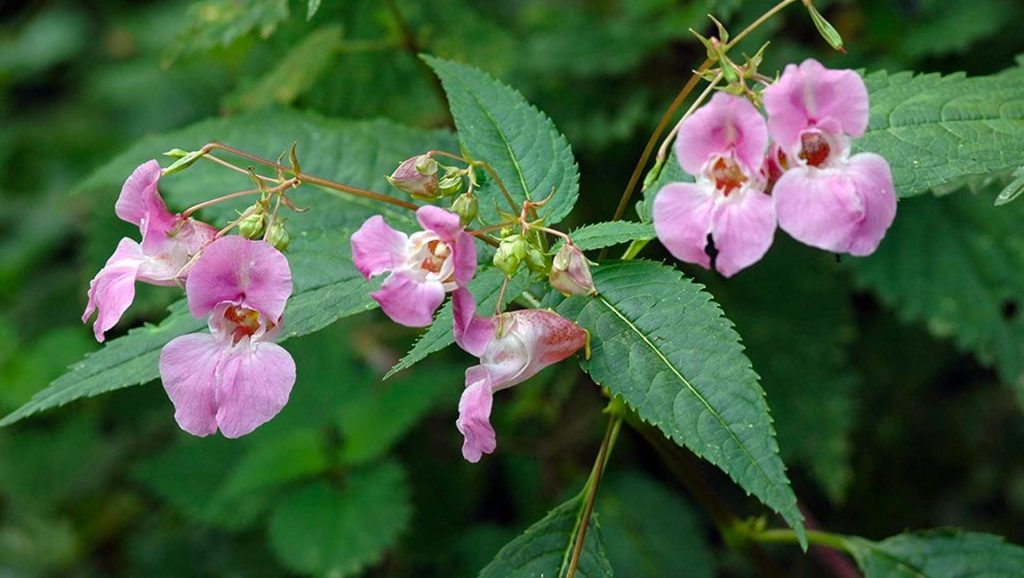
This species is a native plant to the Himalayas. It is now present too much of the northern hemisphere thanks to human introduction. It was introduced to the UK in 1839 and can mainly be found along riverbanks. It typically grows to 1m -2m (3ft 3in – 6ft 5in) high with a soft green or red tinged stem. The flowers are purple/pink coloured and form a helmet looking shape, which has been compared to a policemen’s helmet. After that it will produce seedpods, which will explode, and spread its seeds up to 7m (23ft) in all directions. Himalayan Balsam is an annual plant, which means it completes its whole growing cycle in one season, usually between June and October. A single plant can create up to 800 seeds per year, which means it will spread rapidly. The seeds can also survive up to two years without germinating.
Himalayan Balsam can tolerate low light levels and will gradually shade out other species aiding in it attempt at spreading rapidly. Due to the amount of seeds it can create and the distance the seeds can travel this makes it very difficult to treat and can take many years to completely eradicate it.
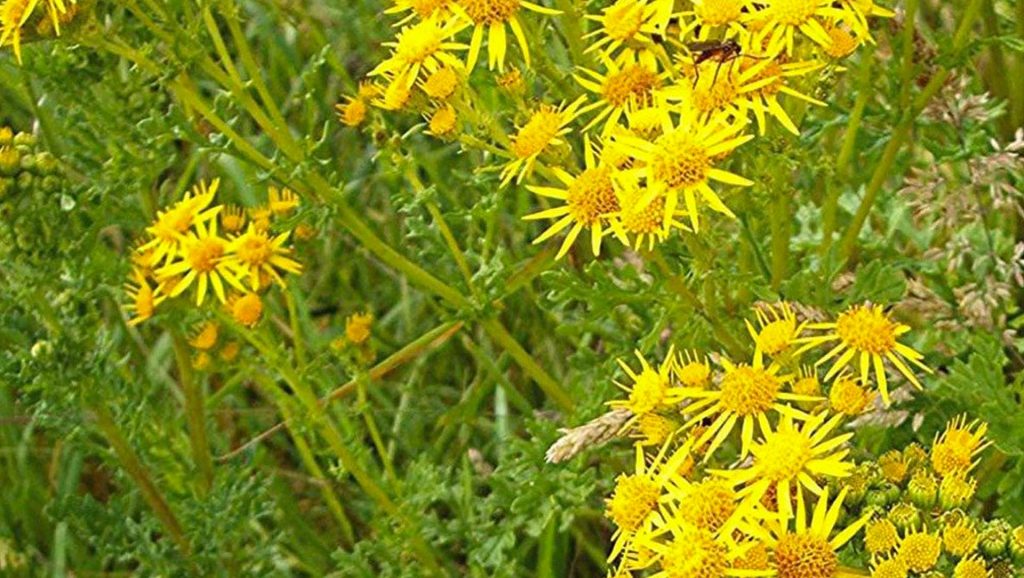
Is a very common wild flower that is native to northern Eurasia. It is usually found in dry, open spaces and has also been distributed widely as a weed elsewhere. The plant is generally considered to be a biannual but it has the tendency to exhibit perennial properties in certain growing conditions. The stems are erect, straight and have few or no hairs and generally reach a height of 0.2m – 2m (1ft – 6ft 7in). The leaves are pinnately lobed and the end lobe is blunt. The leaves have an unpleasant smell to them. The hermaphrodite flowers are 1.5cm – 2.5cm (0.59in – 0.98in) in diameter and are borne in dense flat-topped clusters; the flowers are bright yellow in appearance. Its flowering period is from June through to November. One plant can produce up to 2500 flowers and up to 120000 seeds. Ragwort is a home and food source for at least 77 different varieties of insect’s species. The problem with Ragwort is that it is poisonous to animals to be more precise cattle and horses. Horses do not normally eat Ragwort due to its bitter taste but unfortunately it loses this taste when dried and can become a danger in hay. If Ragwort is consumed in sufficient quantities it can cause cirrhosis of the liver. There is no known antidote or cure to poisoning. Although it is poisonous to humans it is very unlikely to cause harm due to its bitter taste it is not used in food. Ragwort can be removed from small areas by pulling providing the whole root system is removed. Or in larger infestations digging and excavating with machinery might be necessary. Herbicide treatment can also be very successful depending of time frame and site conditions.
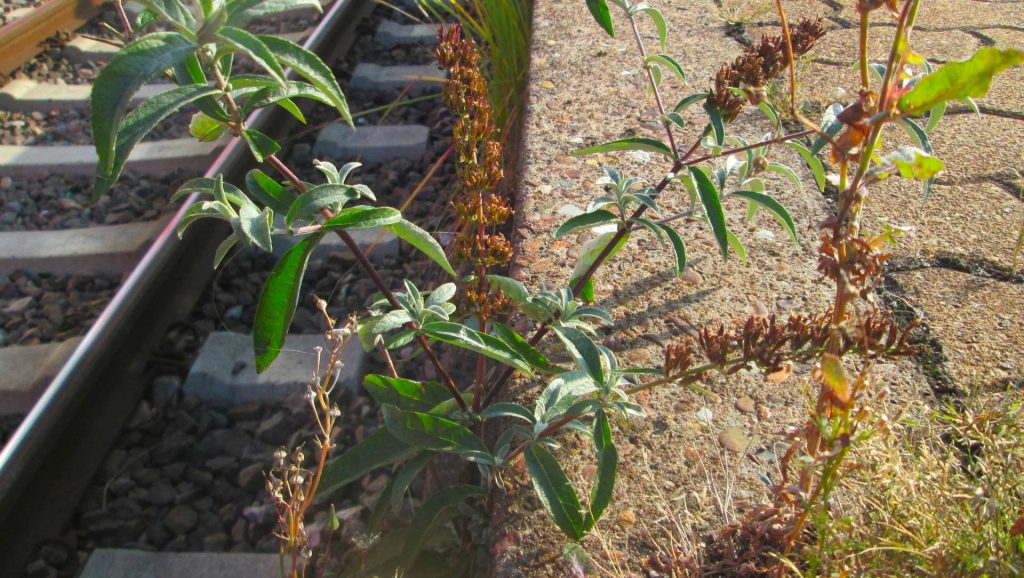
Is an invasive plant, which is originally from China and Japan. It was introduced to the UK at the end of the 19th Century as an ornamental plant. It is found throughout the UK often along railway lines, road verges and on urban wastelands. It will also grow out of chimneystacks and cracks in walls, paths etc. The vigorous shrub has an arching effect growing to 5m (16ft) in height. The pale brown bark becomes deeply fissured with age. The leaves are dark green and grow opposite each other and are 7cm – 13cm long. The flowers are purple, lilac or white and are heavily scented which makes them a haven for insects. The shrub flowers between July and October. There are around 100 species of Buddleia a few qualify as trees and can grow up to 30m in height. The problem with Buddleia is that it can produce a large amount of seeds, which are easily dispersed by wind and can cover a large area quickly. Animals, humans and water currents can also spread them. The seeds are very tough and will grow in difficult places. The plant w can then cause considerable and costly damage with its root system. The most effective way to treat Buddleia is by chemical application. Either spraying the shrubs leaves with a knapsack sprayer or injecting the plant directly with a stem injection kit. It is also possible in small infestations to dig out the shrub making sure all the root system is removed to prevent re growth.
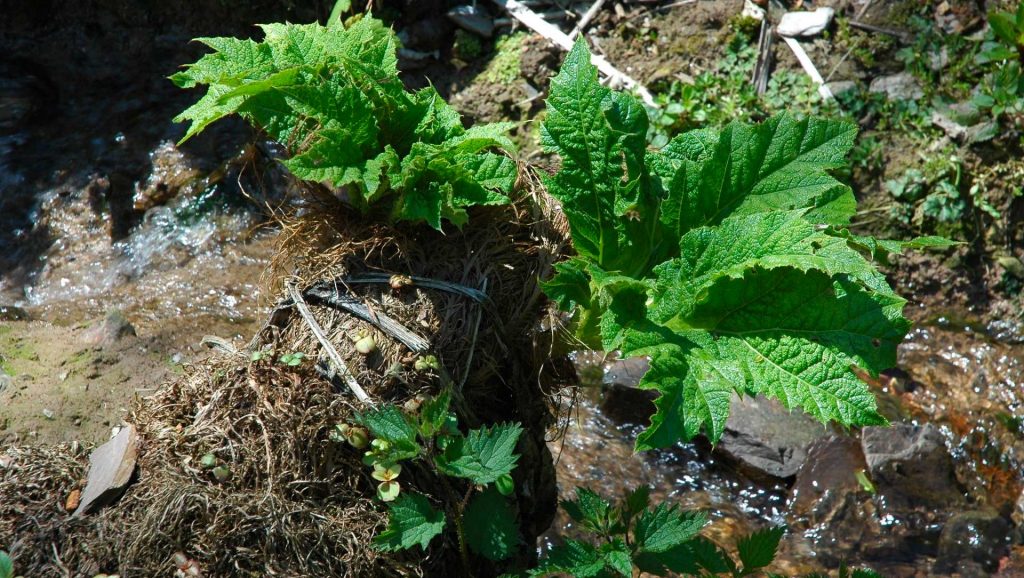
Is a large, clump forming perennial with stout horizontal stems known as rhizomes. The leaves are massive and shaped in an umbrella fashion. The stems can grow up too 2m tall. The plant is native to South America. It was introduced to the UK as an ornamental plant and Giant Rhubarb now often self germinates from seed where it has long been established and has naturalised in scattered locations throughout much of lowland UK. Once Giant Rhubarb has established it can be very invasive and form dense colonies, suppressing native plants with its large leaves restricting sunlight to the plants beneath them. It can also restrict water flow through the obstruction of drainage in adjacent streams and rivers particularly when water levels are high. Giant Rhubarb is listed under Schedule 9 of the Wildlife and Countryside Act 1981 with respect to England and Wales. As such it is an offence to plant or otherwise allow this species to grow in the wild. Giant Rhubarb is most effectively treated by herbicide treatment plan either foliar or stem injected. In smaller infestations it can be dug out making sure to remove all rhizomes.